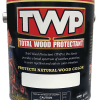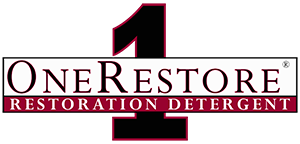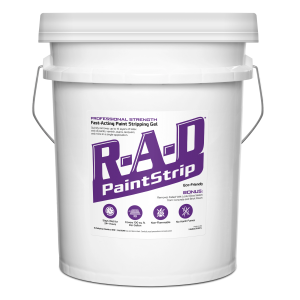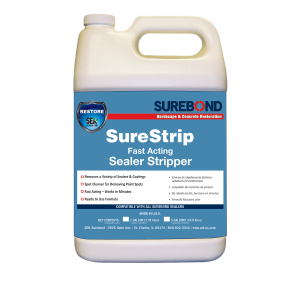NMD80 is a detergent based solution designed for the express purpose of safe but effective cleaning of new masonry structures. The detergent boost to the product enables you to use fewer applications than normal and work comfortably around other people as there is little to no odor or sting with the product. NMD80 is also milder to your equipment because it is less corrosive in nature. Used as described, in the directions, there should be no significant impact on the plants or soils of the job site but protecting landscape should be taken. NMD80 is safe for virtually any type of brick, block, stone, or pre-cast. Always use a test patch to determine dilutions and appropriateness. NMD80 will solve a host of problems including efflorescence, lime putty, and most mineral stains.
Advantages
* Increase square foot production
* Reduce labor cost per square foot.
* Reduce setup costs.
* Reduce Do-Overs.
* Reduce Chemical Costs.
* Safe on Glass.
* Will not harm anodized.
* Improves productivity.
* Reduces liability.
Limitations
This product is very mild but may be corrosive to certain woods, metals, and plants so covering them may be required.
Avoid elevator doors, the coating will be affected by the chemical.
Cover any building hardware, including brass, stainless steel or mild steel.
Care must be taken when used on surface dyed substrates.
Do not use on lime-face brick.
Technical Data
Appearance & Odor: Amber color, mild biting odor.
Physical State: Liquid
pH: 1.0
Vapor Pressure (mmHg): As water
Vapor Density (air=1): As water
Boiling Point: 210 deg F
Freezing/Melting Point: N/A
Specific Gravity (WATER =1): 1.15
Evaporation Rate: >1 As water
Solubility in Water: Complete
Preparation
Protect: Test and protect adjacent and surrounding building hardware surfaces not intended to be cleaned from exposure to the cleaning solution.
Surface & Air Temperatures
To avoid harm to masonry, do not clean when temperatures are below freezing or will be overnight. Best cleaning results are obtained when air and masonry surface temperatures are 40° Fahrenheit or above. If freezing conditions exist prior to application, allow adequate time for masonry to thaw.
Pre-Testing
Always test prior to beginning full-scale cleaning operations. Testing should confirm cleaning effectiveness on each type of surface and stain designated to be cleaned. Test also to determine the desired surface contact time and any cleanup of new potential for adverse reactions with adjacent materials. Allow test panels to dry thoroughly before evaluating final appearance and results.
Suitable Substrates
Red brick, buff brick, pre-cast, limestone, granite, burnished block, ground face block, stone, colored block and mortar, and tile Synthetic stone and surface dyed substrates (read application for these substrate)
Dilutions
Note: Dilutions will vary based on application and surface to be cleaned. In most cases use 4:1 on all surfaces except limestone, synthetic stones and pre-cast use 6:1 to 10:1, S Type mortar use 3:1, Tilt-Up concrete: 15:1 to 30:1.
Coverage Rates
Coverage rates will vary from 100-200 sq. ft. /gal depending on the surface porosity, texture and severity of staining.
Application Information
Before applying read “Protect” in Preparation section and “Precautionary Measures” under Safety Information.
Heavy clumps should be removed prior to application of chemical. Use a steel garden edger, carbide blocks, or bricks when required, use the scraper very lightly just to remove chunks. That area would be scraped down before detergent application. Hold the edger at a very narrow angle to the wall and very lightly graze it along the wall until contacting an obstruction, then use a quick chop to the blob, not the wall, to release it. Work in small 5-6 foot sections at a time and work back and forth in both directions very quickly. Scrape only the amount to be cleaned in a day, which is normally 3000 square feet per man. This should be a very quick process normally. Labor and time must always be balanced against benefits returned and the detergent provides far better evenness and release than scraping.
Low Pressure Application
Apply NMD80 to a pre-wet wall by applying water using low pressure or apply to a dry wall. Begin spraying NMD80 with a low pressure sprayer at pressures between 40 to 100 psi, from the top down. Pre-wet the wall with your pressure washer by applying water using low pressure. Begin spraying from the bottom up, use long even passes while spraying and make sure the surface is completely covered. You will see white foam on the wall that does not turn green like raw hydrochloric acid. After initial foam collapse, reapply product without rinsing until you no longer see foam. When cleaning sand faced brick, use more applications of cut NMD80 and scrape more, then rinse carefully. Dwell time and repeated applications are the most critical aspect to increase production and profitability. To see if you are ready to rinse, use the rub test. Using heavy rubber gloves rub lightly on a mortar smear or blob. If it crumbles easily you are ready to rinse. Generally this occurs in seconds because of the penetrating surfactants in NMD80. If there are problems with one application cleaning you may want to use one of these options; decrease the dilution, scrape more thoroughly, or use two applications. The whole idea here is to keep production up and rinsing is the most time consuming aspect of the clean up. Spray the detergent on only as much surface area as you can rinse comfortably without the surface drying. If you are working off a scaffold, swing stage, or ladders you will generally work in a much larger area from the top down because the water running down the wall will keep the wall below you wet and rinse the detergent down and off the wall as you work above. I would like to give two cautions here: 1) allowing the product to dry on the wall may not harm anything but is never recommended, 2) you always should rinse from top down to prevent drying.
Down Stream Projection
An advance in detergent application that has merit is the downstream high volume projection units. These allow you to shoot the detergent great distances with relative ease using high concentrations so it will be effective at cleaning. This will be useful in situations like tilt up concrete where evenness of the surface appearance and removal of the construction dirt is the primary goals. The job is not properly done if not properly rinsed. That means gaining access to all areas and using rinsing techniques is still required. The use of extension poles following this type of detergent application would be appropriate in limited circumstances such as certain chimney and roof structures. It would not be recommended for large scale cleaning as it is very difficult to maintain the required overlap of passes from a distance. Always make sure your dilution is set appropriately for maximum clean and productivity savings.
Protection
Building surfaces such as, glass, anodized aluminum, virtually any kind of brick or block; even limestone is usually not affected by NMD80. As with any masonry cleaning products proper job site conduct and safety precautions need to be followed. When compared to any other product, your chances of causing harm, when using accepted standard practices, are virtually zero. Elevator doors, some imported “stainless steel” doors, foundation hardware and some “brass” coated parts need to be covered during cleaning
Tilt-Up Concrete
Tilt up concrete cleaning is generally accomplished with the NMD80 at high dilution levels. The range of dilutions will vary according to the surface finish, but the range should be within, 15:1 to 30:1. This is an area where a projection downstream nozzle might be appropriate for chemical application. The usual cleanup only entails removing surface dirt from the construction project and not removing heavy bits of mortar or smears. The main goal of the cleaning project here is to make the face of the building appear uniform without causing any further surface changes. This makes it important not to use restoration detergents as they may whiten and/or streak the building. Apply a light coat of water to the surface just to the point of run from top to bottom. Follow this with a quick even application of NMD80 at the dilutions recommended above. You may apply this from the top or bottom but except in the case of very tall structures of multiple levels you should clean one whole section at a time.
Form Release
Apply a solvent-based product to remove most form releases and to allow standard cleaning practices to work. Either C-Tar Melt or Stripsol are very effective pretreatments before NMD80 cleaning in order to remove work dirt or to even out the appearance of the surface.
Rinsing
Rinsing determines much of the quality of the job. By varying tip width and distance from the wall you can have as little pressure as a garden hose or enough to blow out mortar joints. Generalized rules of rinsing would include, 1) using a wide tip of not less than 25 degrees, 2) using overlap while rinsing, 3) allowing chemical time to do the melting job, 4) 2000 psi is a good pressure to use. Operator fatigue, workers release the trigger a lot less often when using 2000 psi all day long. 2000 psi is also much safer in unbalanced situations like a ladder or reaching on scaffolds. Generally 2000-psi machines use less water, which may or may not be an issue on certain job sites. Any pressure from 500 psi to 3000 psi is generally acceptable in the hands of a trained worker. More chemical will be used with the lower pressure and greater care will be taken with the higher pressure on certain types of special brick finishes. Let the chemical do the work instead of the pressure. Experienced professionals understand that the biggest expense is not the detergent, but the labor. Always use overlapping passes to achieve a uniform appearance to the job. A 40-degree nozzle tip to get wider coverage and increased speed is recommended. A two or one and a half brick overlap is easily achieved with this nozzle and is definitely recommended on sand faced or other special brick surfaces. This also decreases the potential for surface damage. Finally, take great care when using rotating zero degree nozzles. They can do great harm to mortar joints and masonry surfaces, such as leaving swirl marks in the surface. To prevent this keep the nozzle well back from the masonry surface.
Note: Synthetic masonry and surface dyed substrates need to be rinsed at low pressures (example: water from standard garden hose with a nozzle), high pressure rinsing is not recommended.
Safety Information
Precautionary Measures: Always wear goggles and rubber gloves when handling this product. Keep off of skin and clothing. If material comes in contact with clothing, wash before re-use. Do not dilute NMD80 with any other product except water. Do not use for any other applications other than specified. Do not remove label. Avoid elevator doors, the coating will be affected. Read Material Safety Data Sheet for additional safety and health hazard information prior to use. Do not get in eyes, on skin or clothing. Avoid breathing fumes. Keep container closed when not in use. Use with adequate ventilation. Applicators should wear rain suit of plastic, rubber or PVC, boots and gloves, face shields and/or goggles to avoid splash to bare skin or eyes. Use a MIOSH/MSHA approved respiration for use with acids if adequate ventilation is unavailable. Though the potential for fuming NMD80 is minimal, take precautions to avoid exposing building occupants to fumes. Dispose of empty containers according to federal, state, and local requirements. Avoid drifting of material or rinse water onto autos and pedestrians by protecting or diverting such traffic.
First Aid + Instructions in Case of Contact or Exposure
Eyes: Flood with water 15 minutes and seek medical attention. Remove contact lenses immediately.
Skin: Wash off with soap and water, use good skin emollient. If irritation develops, seek medical attention.
Ingestion: Drink lots of water to dilute. Seek immediate medical attention. Do not induce vomiting.
Inhalation: Remove to fresh air. Call physician and seek medical attention if irritation develops.
Spill or Leak Procedures
Waste Disposal Method: Check state, local, or federal regulations for your area. Steps to be taken if material is released or spilled: Provide adequate ventilation or respirators where needed. Large spill; dike and contain for intended use. Small spill; absorb on oil dry and place in approved container for disposal.
Container Handling/Storage
Store in a cool dry place. Keep container tightly closed when not in use. Wash thoroughly after handling
Notice
This product has been classified in accordance with the hazard criteria of the CFR.
Disclaimer
The information herein is given in good faith, but no warranty, either expressed or implied is made. Final determination of the suitability of any material is the sole responsibility of the user. All materials may present unknown hazards and should be used with caution. Although certain hazards are described herein we cannot be sure or guarantee these are the only hazards, which exist.











I need to remove efflo off brick paver floor , what is the best dilution and how long should I leave on ?
Only use on outside surfaces. Dilute 1 part to 4 parts water. Apply and pressure wash rinse after 5-10 minutes.
Thank you , does it need to be brushed in ?
No.
Sorry last question do you need to note wet surface with water ?
Wet first.
How long should occupants stay off the surface after rinsing?
12-24 hours.
Is it necessary to use the product with the white scum presoak?
No.
Will this remove sealer effervescent from pavers?
It does remove efflorescence but efflorescence does not come from a sealer. If you have a current sealer on the bricks now and have white spots, this will not work.
What will remove the white spots ?
It depends on what the white spots are? It could be efflorescence, a bad sealer, ply sand haze, trapped moisture, etc. Not one solution for all scenarios. We would need more info as to what has been done to the surface in the past and pictures as well.
Will this take off poly sand haze on blue stone?
No, it is not designed for that.
Will this take off red clay ?
Sorry but not sure on this as it is not in the description as if it will remove red clay.
A quality pump sprayer should work as long as it can handle an acid based product.
can you use this with a garden sprayer or do you need a special wand?
This product does remove rust stains.
Will this product work on rust-like stains on my exposed aggregate drive/walkway from applying moss remover along my lawn?